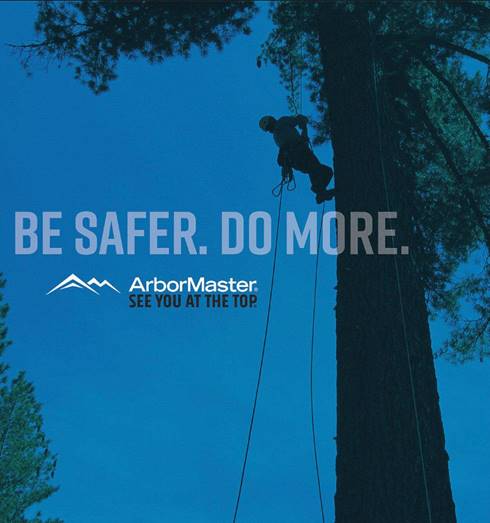Ensuring every member of a tree care team returns home at the end of a hard day’s work is priority number one on every jobsite. And, it’s Ken Palmer’s job to help employers make sure crew members do what is necessary to make that happen – a job the three-time international tree-climbing champion takes very seriously. Tree care can be a dangerous pursuit that requires a lot of education, training and critical thinking in order to be safe and successful. And that training isn’t best done on the job; it requires more background in everything from the basics to developing full situational awareness, said Palmer, president and co-owner of ArborMaster, a Willington, Connecticut-based tree care safety, skill and workforce development firm.
“You can wear safety on your forehead and talk about it until you’re blue in the face, but if you’re not educating people for the work they’re going to do, train them and provide them the experience they need, then how on earth will they exercise situational awareness in the field?” Palmer said. “I’ve been working professionally with trees for almost 40 years, and I know it has everything to do with how you approach the work. It’s important to approach training as an apprenticeship, just like every other field that is of a dangerous, yet skillful nature. On-the-job training is best to transfer education and training to human performance on the job.”
Moving into 2018, Palmer said educational priorities in the tree care industry include the following:
- Workforce development. Employee education, training and retention are critical to sustaining a stable, safe workforce. In some cases, Palmer said company budgets have been pared down, making it difficult in most cases to support these efforts industrywide. “It’s all about the development of a culture of learning and growing. Nothing replaces education, training and experience on the job,” he said. “But, you have to put together a better business model and invest in your workforce. You have to retain people, pay them well and give them a vision for the future, especially with the workforce coming in right now being mostly millennials who are more accustomed to moving from job-to-job more frequently than what was more common in the workforce 20 years ago.”

- Take your time and evaluate often. The kind of education needed to sustain a safe working environment for tree care professionals is not an overnight process. In fact, it needs to be an ongoing process. It’s important for people to know why they are learning new information and why they need to break bad habits. Then, people are far more invested in training and developing new skills. Experience is best gained by doing and by discussing and by systematically working through it. “Developing people takes time. You can’t just ‘fix’ people in a week, and people need to know why they’re learning what they are,” Palmer said. “People can achieve a lot in a week, but it’s important to go back and assess what they’ve learned. It’s good to develop a culture of teaching, learning and skill development, but training is actually doing something over and over until you can do it by second nature.”
- Provide experience. Education and knowledge don’t mean anything without application and experience. But, it needs to be the right experience. “Developing your people takes a process of developing a culture of teaching, learning, skill development and gaining experience,” Palmer said. “Until people have a certain amount of experience under their belt, they need to be guided through this process.”
- Create teams. Working together helps team members keep one another accountable and creates bonds that help them share in both “wins and losses,” and that mentality will come together over time if it’s a good team, Palmer said. “When you’re out with the team, everything they do, they do as a team. As soon as you single out a team member, you’ve just introduced separation anxiety,” Palmer explained. “People start second-guessing and thinking differently when that happens.”
Accountability is critical to any successful team.
“The things they overcome in working together help them achieve a level of teamwork that’s second to none,” Palmer said. “Being part of a good team often means more to people than how much they’re getting paid. It’s really important.”
Palmer said these four educational priorities fit well into the objectives of successful tree care businesses. Ensuring the right training and education is provided to employees starts with outlining specific goals.
“What are your objectives from a business perspective? What do you hope to achieve? I want to drive well-defined objectives,” Palmer said. “I go into what’s going on in the industry, what has changed, why we do business the way we do, then explain how the right training is a combination of knowledge, skill and experience. I want our customers and employers out there to flesh out their objectives and really talk about how they can ‘fix’ their employees.”
For more information on training and classes, visit arbormaster.com. See You At The Top!®
For more tips and trends in starting your own tree care business, view more articles on the Tree care, rental and landscape blog.
This article contains third-party observations, advice or experiences that do not necessarily reflect the opinions of Vermeer Corporation, its affiliates or its dealers. Advice or suggestions provided in this article are statements of general applicability that may or may not apply to individual businesses, whose circumstances and operations may vary.
